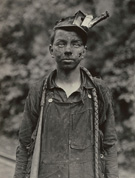Introduction
Out of the stacks and vaults of the National Archives comes this selection of eyewitness accounts. They are vivid and intensely personal, transporting us to a deeper understanding of the events described.
Thomas Jefferson reported firsthand on the fear and panic that gripped the city of Paris in July 1789, during the first violent convulsions of the French Revolution; President Lincoln’s family physician poignantly described how the President clung to life through the night of April 14, 1865, after being shot at Ford’s Theater; and the crew of the Apollo 8 spacecraft, in 1968, traveled farther from Earth than anyone ever had and saw their home planet as no one had seen it before: a miracle of color and life suspended in space—shimmering, delicate, and impossibly distant. Filled with surprising details, these accounts have the ring of truth.
Lady Bird Johnson, former First Lady, said that she recorded the things she saw because she found her experience “too great a thing to have alone.” The instinct to tell what we have seen is as old as humanity. The National Archives is filled with countless stories waiting to be shared. Within them lie embedded messages that enlighten us on what has gone before and strengthen us for what may lie ahead.
This exhibition was created by the National Archives and Records Administration, Washington, DC, and the Foundation for the National Archives.
The quotes from the eyewitness accounts retain the original spelling and punctuation, except where indicated by the use of brackets.
.
“Young Driver in Mine. Has been driving one year. 7 A.M. to 5:30 P.M daily Brown Mine, Brown W. VA.” photograph and caption by Lewis Hine, 1908.
Lewis Hine’s eyewitness accounts took the form of photographs. As an investigative photographer with the National Child Labor Committee, he documented children working in coal mines, factories, fields, and street trades.
Hine’s images are unflinching, accompanied by his own captions that are sparely written, but filled with facts. Young children with world-weary faces stare out of these photographs, confronting viewers with the truth of child labor in early 20th-century America. This photograph shows a young miner whom Hine encountered in West Virginia.
National Archives, Records of the Children’s Bureau [102-LH-136]
.
